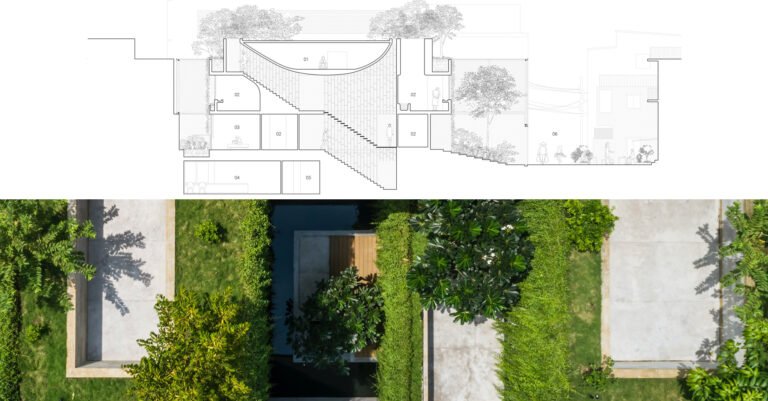on a sloping terrain, massive concrete columns pierce noriaki hanaoka’s house in japan
noriaki hanaoka’s house hovers above sloping terrain in japan
Perched on a steep slope in a coastal prefecture of Japan, Torus House celebrates monolithic and rigid geometries. Completed by Noriaki Hanaoka Architecture, the residential project is articulated by large planes of concrete in combination with a generous amount of glazing. The brief from the client was to create a single-story concrete structure to accommodate a well-lit spacious workout room and panoramic views.
Working on a plot with an extreme inclination, the architects’ biggest challenge was to form a house that reveals itself on one level. To accomplish this requirement, they added large concrete columns, which emerge from the terrain upwards and penetrate the structure’s body. Apart from static function, they act as centerpieces, enriching the interior with their imposing form and size.
adheres to the rhythm of the nature
Located near the top of a hill, the formation of Torus House disobeys its surrounding topology. Built under severe conditions, the resulting structure employs a floating one-room living space and a lower part as an intermediate space. Floor-to-ceiling glazing wraps the entire structure allowing for a clear visual connection to the exterior scenery.
The interior reveals itself around a three-meter square hole running through the center of the massive slabs. Thanks to the hole, ample daylight, and ventilation flood the space, further lending to its bright, breezy atmosphere. The hole is exposed to the elements welcoming the wind, rain, and direct sunlight to traverse the structure and reach the ground. The entire building ‘breathes together with its environment.’
‘As opposed to the normative conditions that place ‘man’ or ‘machine’ at the core of architecture, we place a
hole that permeates ‘the nature’ at the center of architecture,’ mentioned the Japan-based studio.
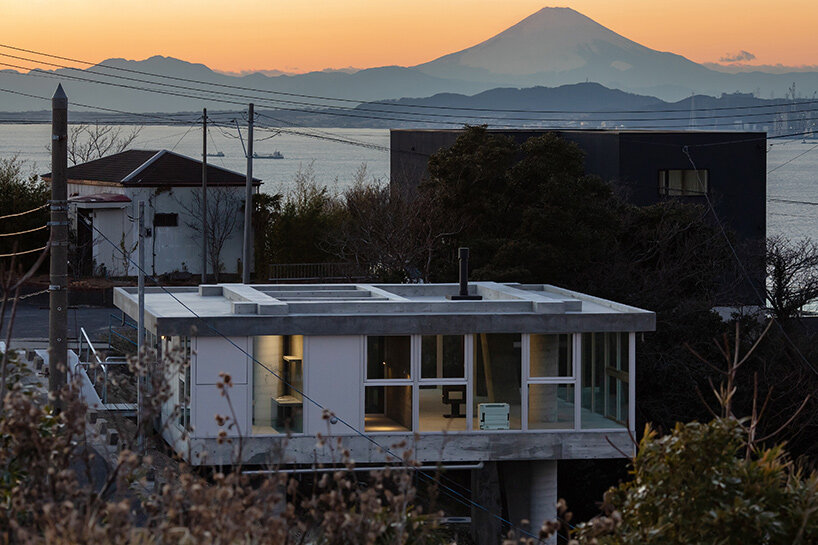
all images by Tsuyoshi Fujino / Shinkenchiku-Sha
For this project, the architects sought to separate the main living space from the sloping ground, allowing it to float. To achieve this goal, they used massive concrete columns that pierced the entire structure and settled on the ground. With this gesture, an in-between space on the part below took form. The lower slab of the system is supported by four columns and braces, which protrude into the above level.
The upper floor unfolds as a fluid, open layout surrounded only by sliding doors to adjust to everyday life. Doing so provides inhabitants with unimpeded views of the sea, allowing the mind to linger and unwind. To further enhance the connection to nature, a hole in the center creates a sense of continuity between inside and outside. There, a perforated steel plate covers the gap to form an alluring floating inner garden
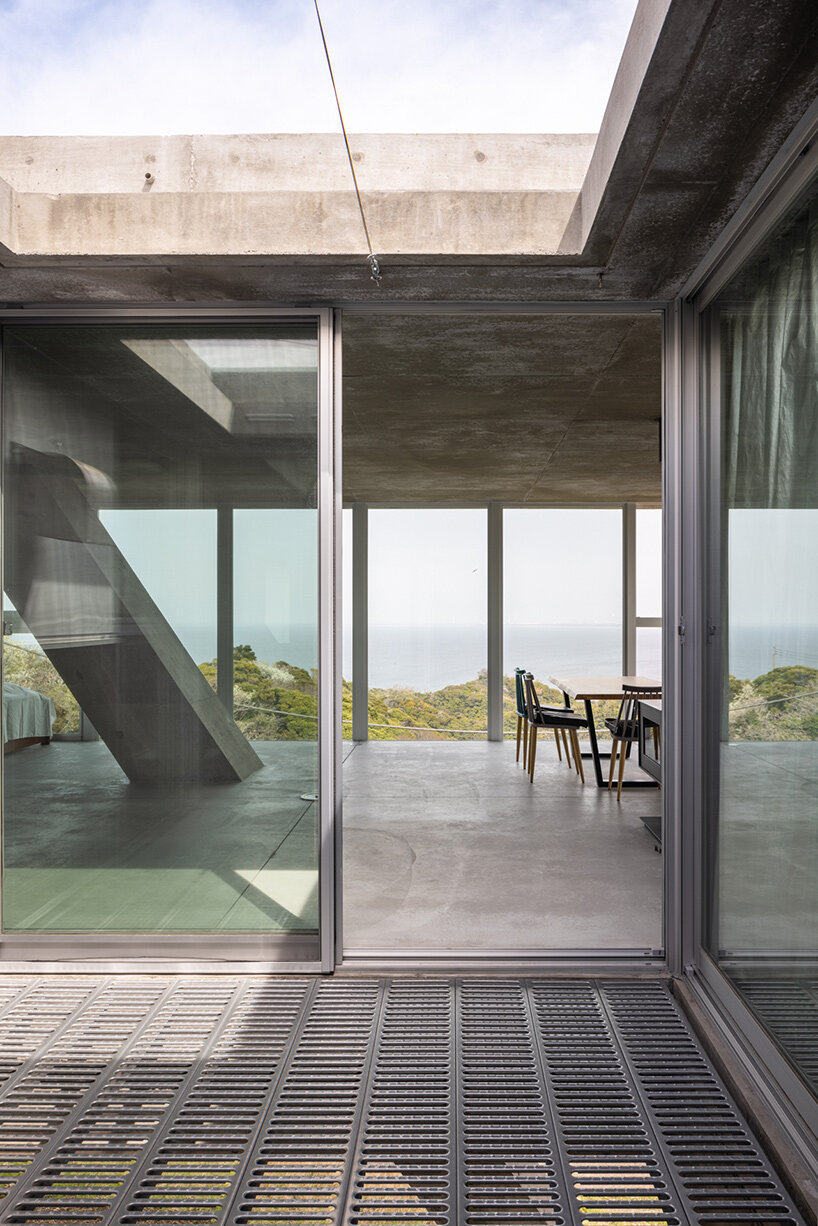
a mesh flooring makes the hole accessible on the floating-level
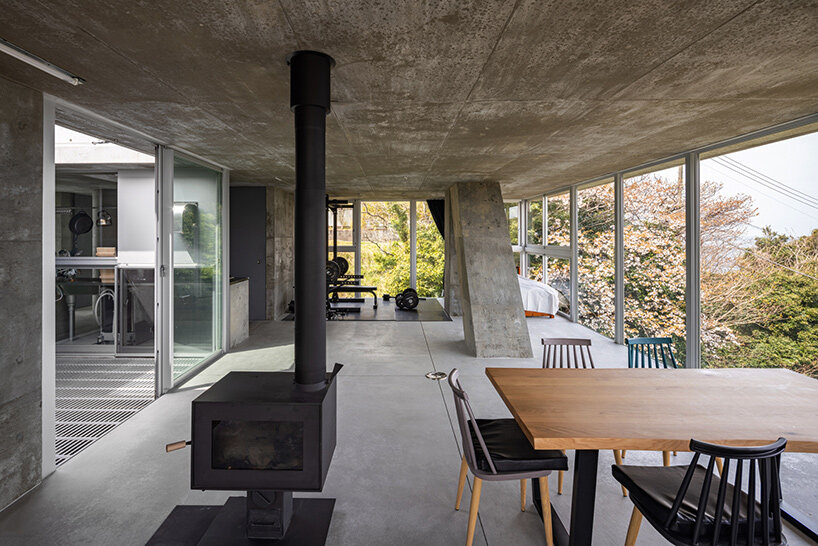
the overall structure consists of a living area on the upper floor and an intermediate space on the lower floor
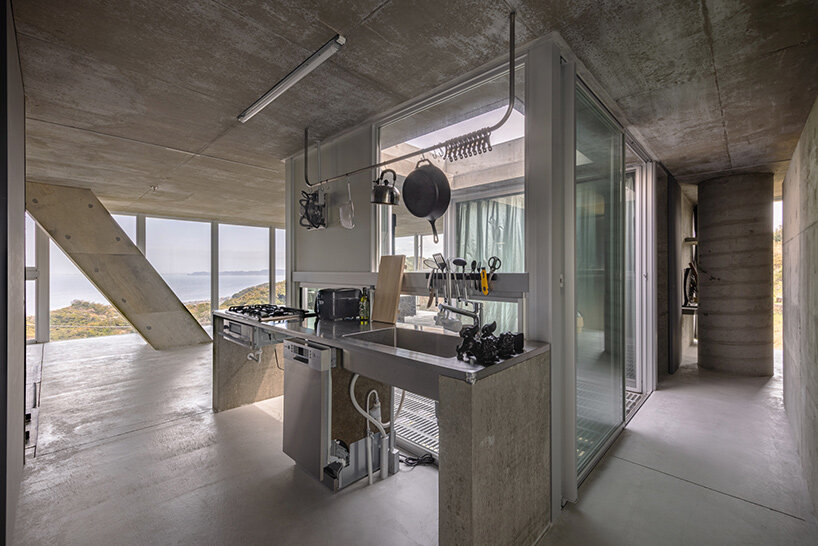
an open layout arranged around the square hole


